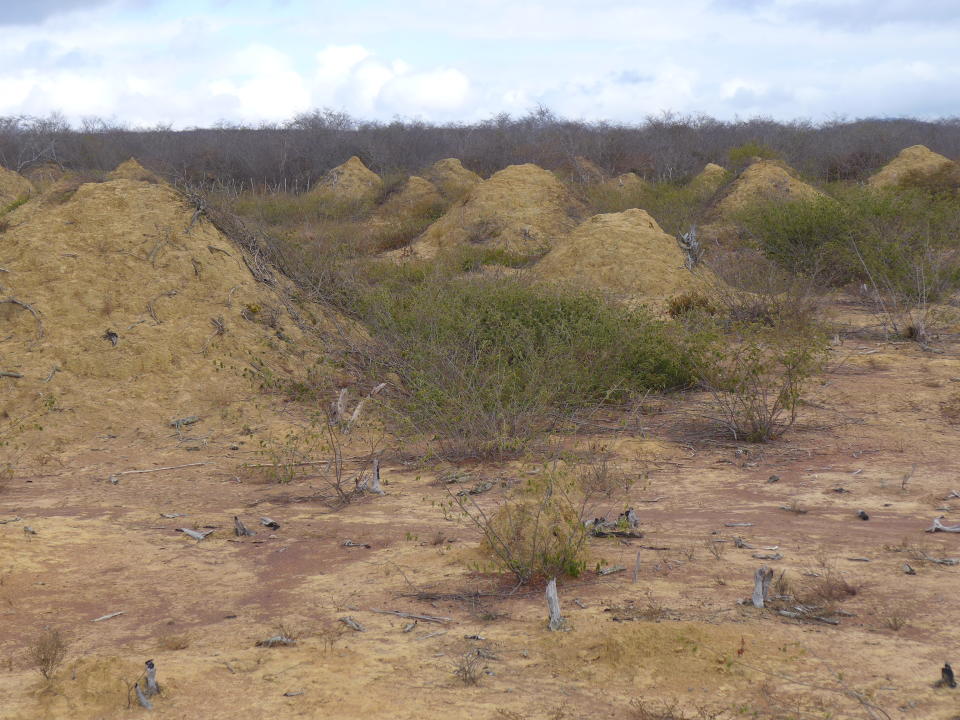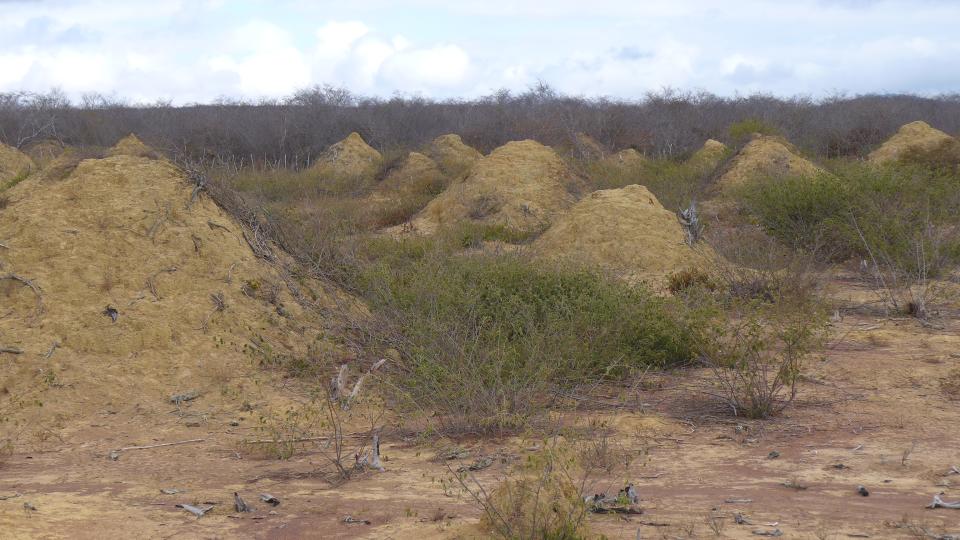‘Biological wonder’ created by termites discovered in Brazil
Termites have created a wonder of the world as old as the pyramids that dwarf the ancient Egyptian monuments in scale, scientists have discovered.
The vast array of still-inhabited termite mounds in north-eastern Brazil cover an area larger than Great Britain and are visible from space.
They are the product of the slow and steady excavation of interconnected underground tunnels dating back as long ago as 4,000 years, according to a study of soil samples.
Over millennia, the industrious insects deposited huge quantities of dug out soil to create around 200 million cone-shaped mounds, each about 2.5 metres (8.2ft) tall and nine metres (29.5ft) across.
Together the mounds cover an area of 230,000 square kilometres, significantly greater than England, Scotland and Wales combined.
At ground level, they are largely hidden from view among the thorny scrub caatinga forests unique to the semi-desert region – but they show up on Google Earth satellite images.
Study leader Professor Stephen Martin, from the University of Salford, said: “These mounds were formed by a single termite species that excavated a massive network of tunnels to allow them to access dead leaves to eat safely and directly from the forest floor.
“The amount of soil excavated is over 10 cubic kilometres, equivalent to 4,000 great pyramids of Giza, and represents one of the biggest structures built by a single insect species.”
The scientists collected soil samples from the centres of 11 mounds and used dating technology to estimate their age.
The results, published in the journal Current Biology, showed the mounds were between 690 and 3,820 years old.
Termite mounds have a complex inner structure with numerous shafts and tunnels that serve as a ventilation system for underground nests.
The constructions investigated by the scientists are not abandoned ancient relics. Their builders, all members of the termite species Syntermes dirus, still inhabit large colonies incorporating as many as 60 mounds, the study found.
Prof Martin added: “It’s incredible that, in this day and age, you can find an ‘unknown’ biological wonder of this sheer size and age still existing, with the occupants still present.”
Many questions about the termite colonies remain unanswered, said the researchers.
For instance, attempts to explore the colonies with a fibre optic scope had failed to locate a single “royal chamber” housing the termite queen.
The mounds were also distributed in a strangely regular way that did not appear to be driven by aggressive encounters between neighbouring colonies.

 Yahoo News
Yahoo News 

